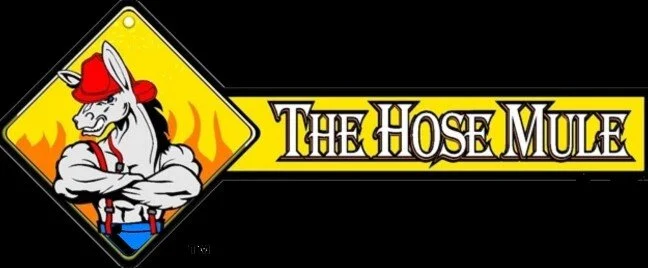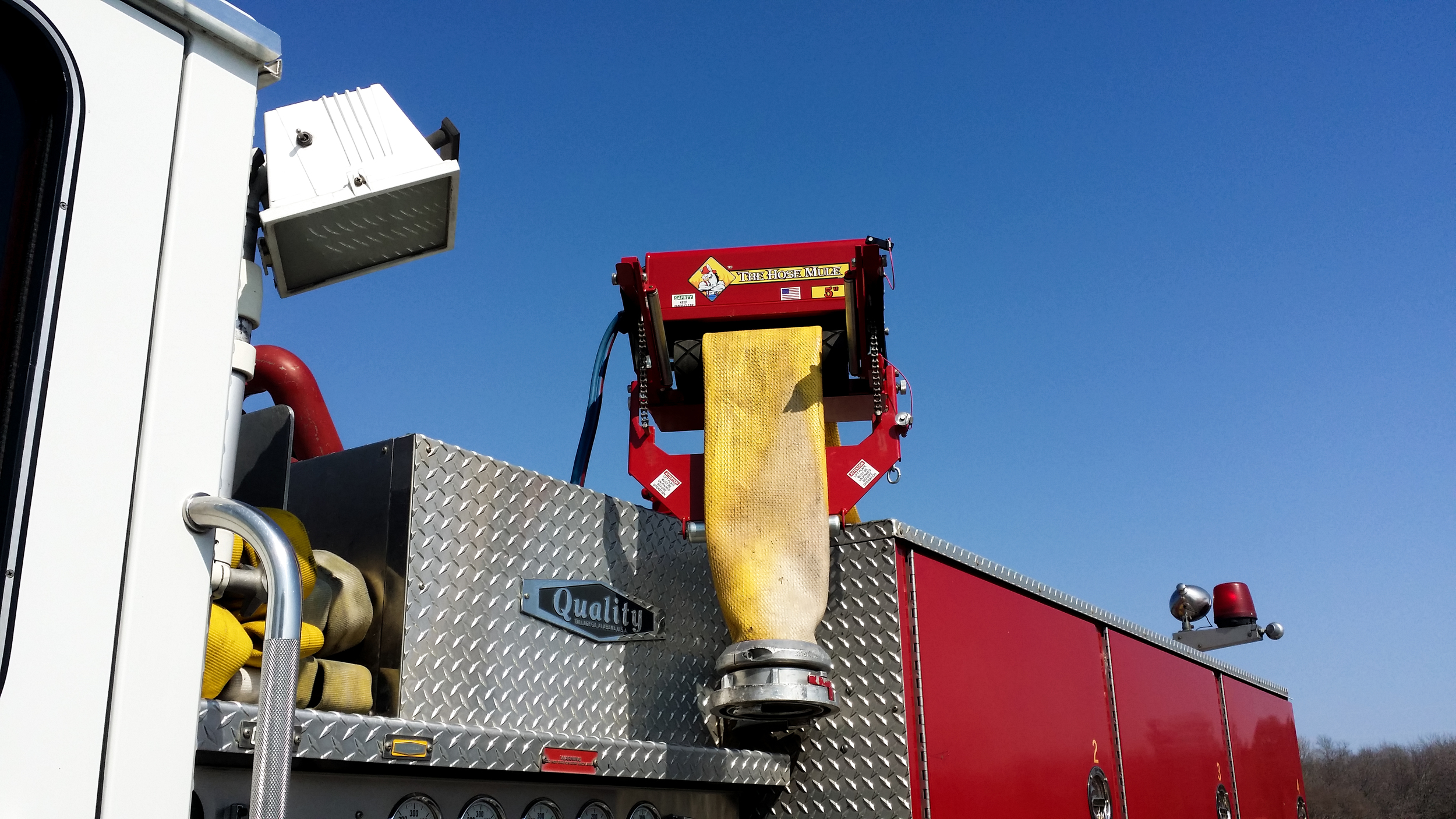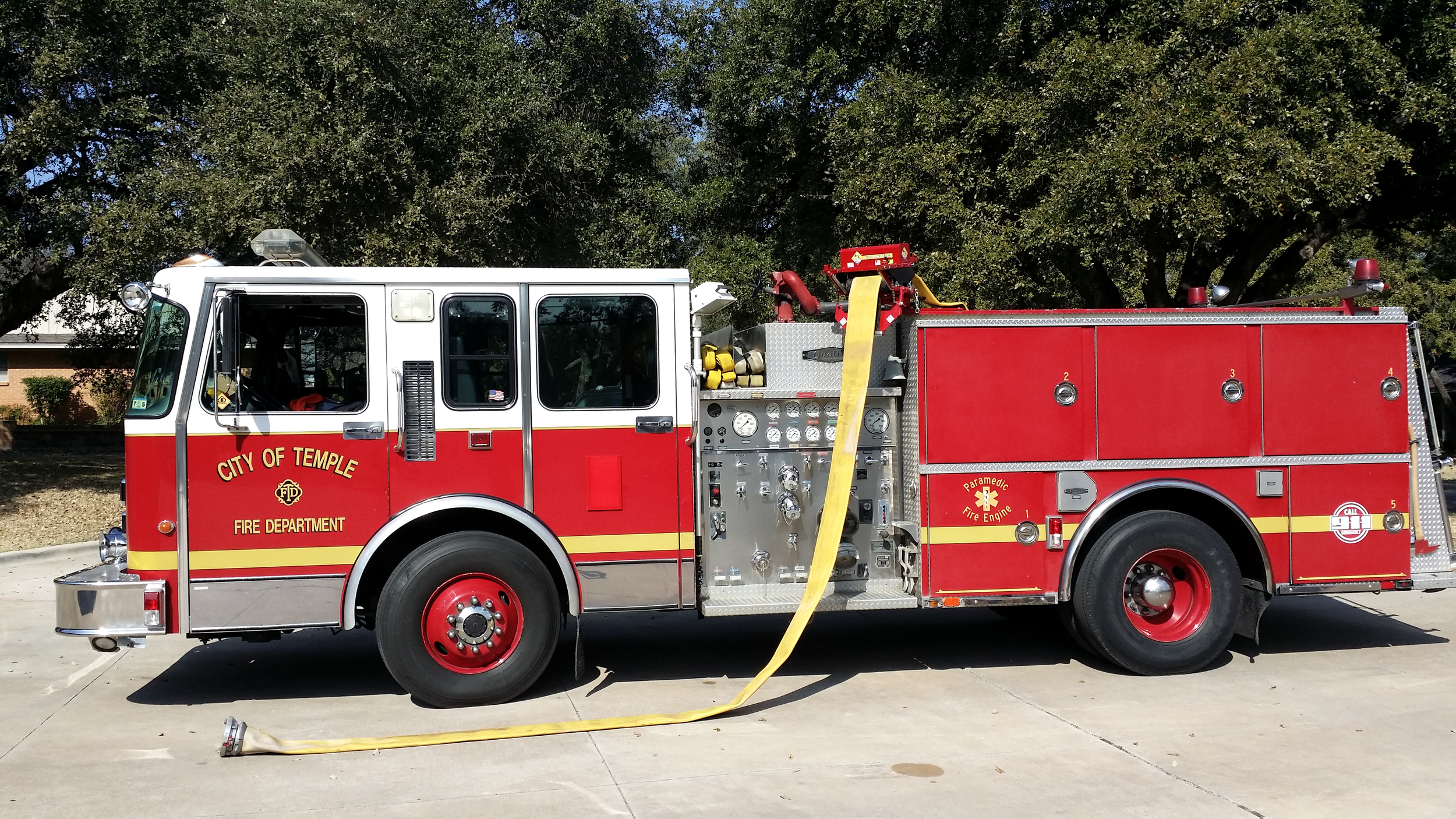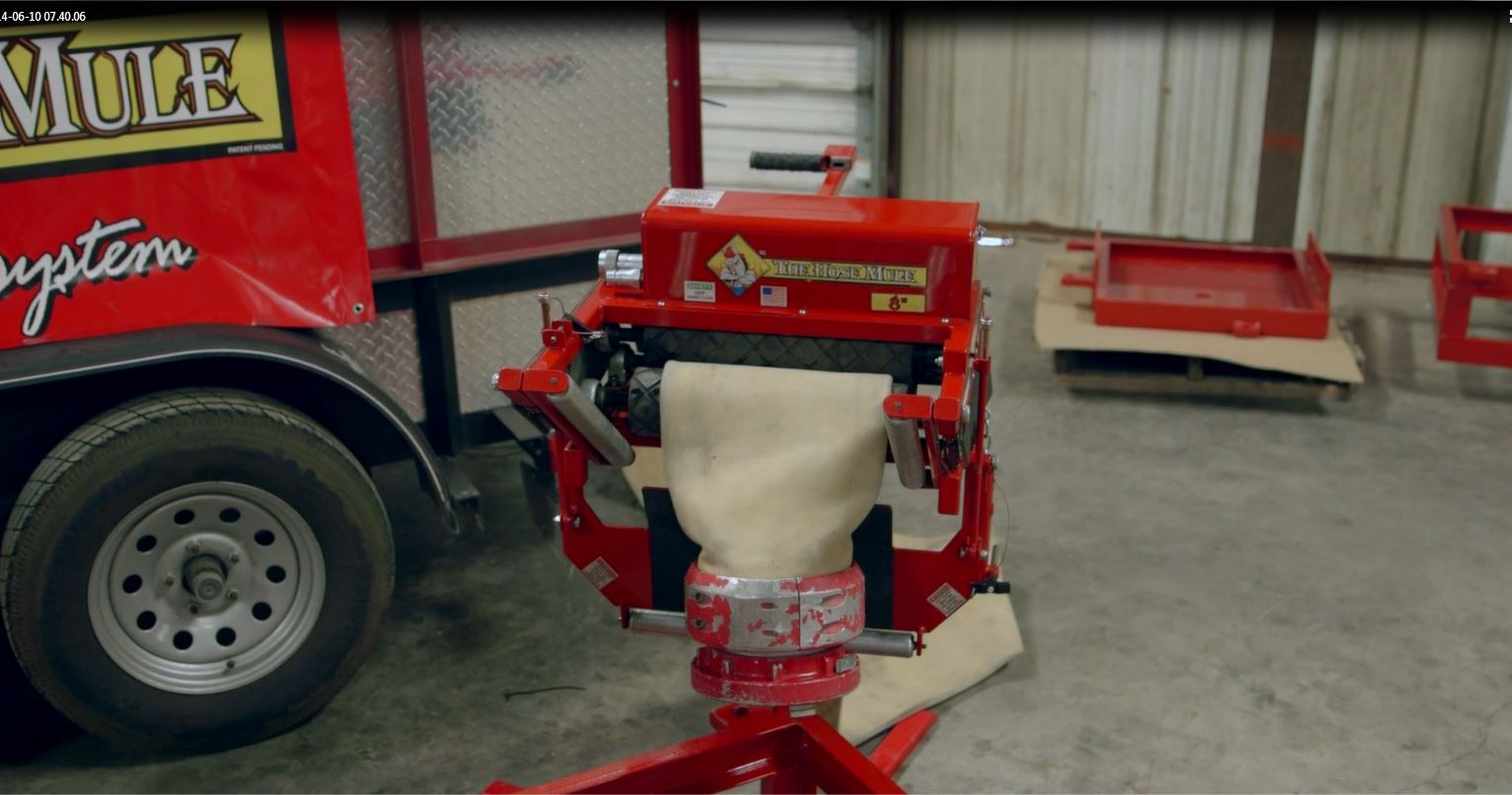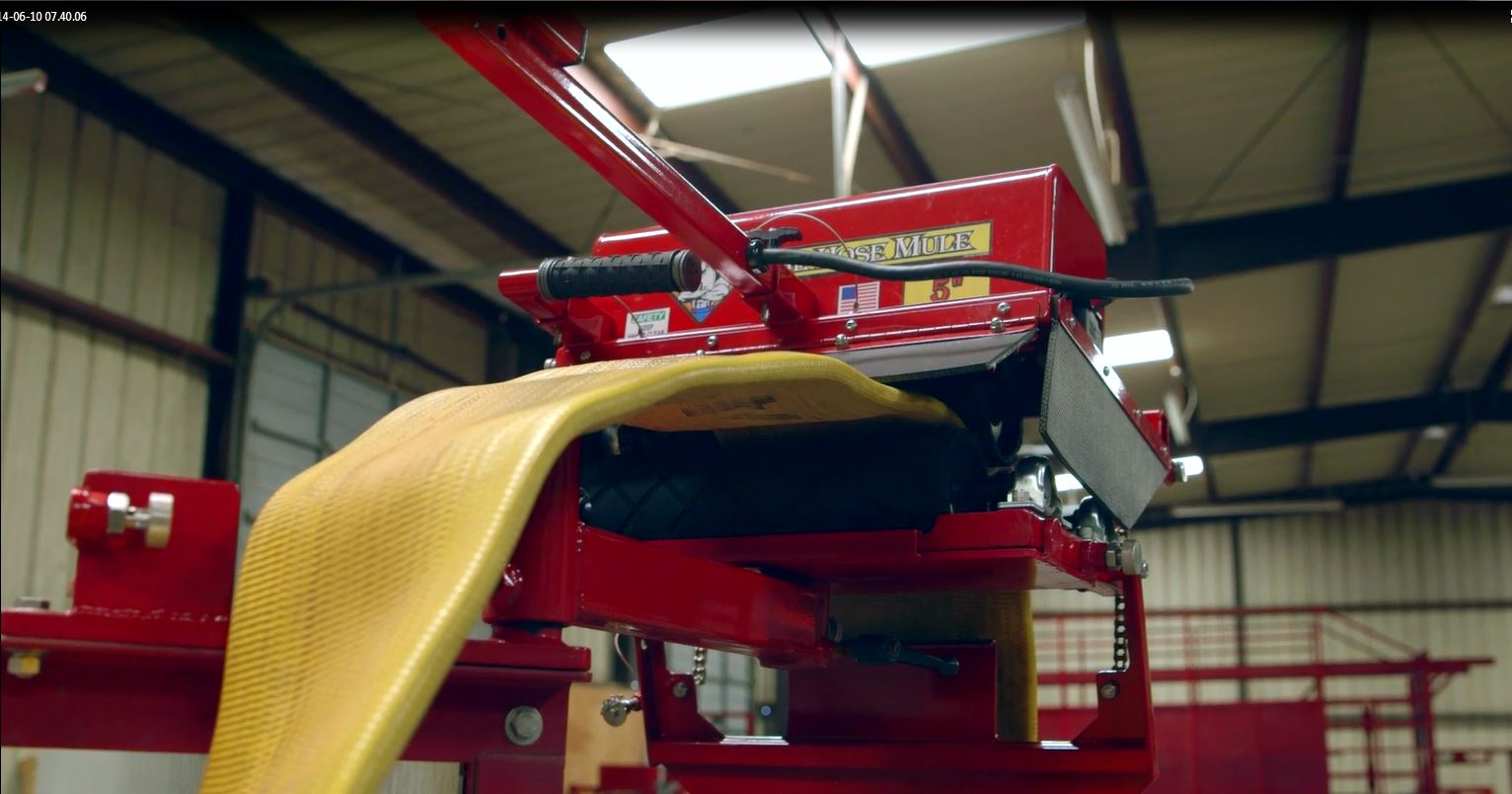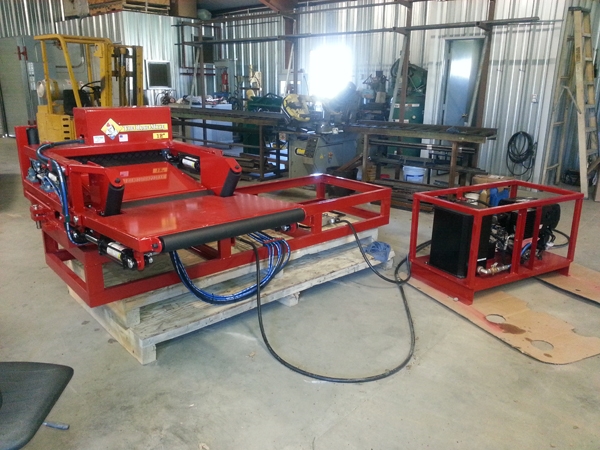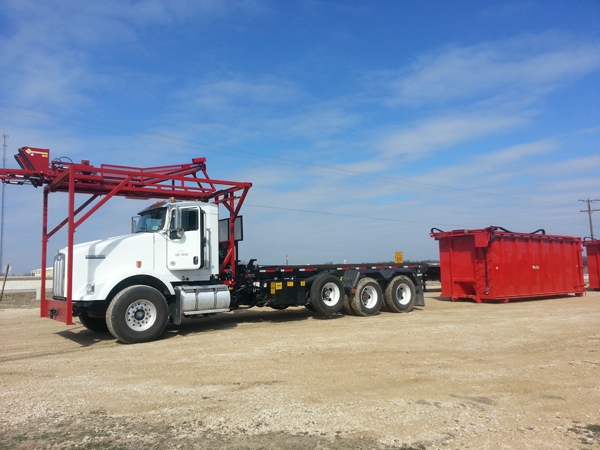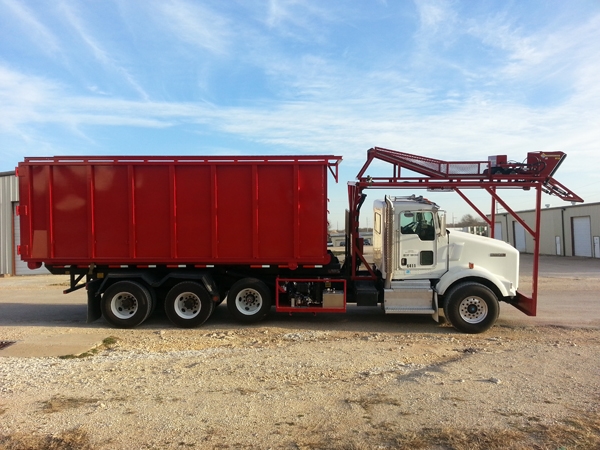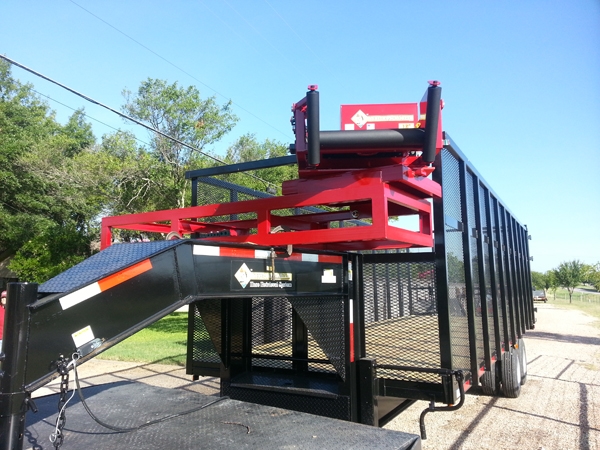TEXAS ENTREPRENEUR INVENTS LABOR SAVING FIRE EQUIPMENT
Large diameter hose is no longer the sole property of industrial firefighters. Across the country, many rural fire departments have adopted five-inch hose or larger as the ideal sized supply hose, providing a virtual above ground water main.
The problem comes when it's time to put the portable water main away, says Clint Baker, a firefighter and inventor of the Hose Mule, a device for loading hose aboard the apparatus.
"The five-inch hose is about the most efficient way to move water, but nobody wants to pick up a half mile of five-inch hose," he said. "I started thinking about whether there was some way to mechanically pick it up."
After eight years of tinkering, Baker has a product ready to market. The Hose Mule mounts on the side of the fire truck above the hose bed. It comes equipped with rollers that grip the hose, both lifting it and simultaneously draining the water and air inside.
"As you drive along side the supply line you had laid, the Hose Mule picks it up and brings it back into the truck bed where all the crew has to do is fold it back into place," Baker said. "A crew of four can pick up 100 feet of five-inch supply hose in a minute."
The Hose Mule comes in two different models - one that runs off a 12-volt DC gear motor and the other that operates hydraulically. The hydraulic model, known as the Super Mule, is designed to handle hose six inches in diameter and larger, common among industrial fire brigades.
"The hydraulic machine has a flow control valve on it where you can vary the speed," Baker said. "The electric one is a set speed, but you can vary the speed by how much down pressure you put on the drive roller."
Baker has already made his first sale of the hydraulic Super Mule. Paul Shapiro, a retired Las Vegas Fire Department firefighter and author of "Layin' the Big Lines," purchased a Super Mule to mount on a water supply engine. Shapiro plans to contract with wildland fire suppression agencies in western states for water supply.
The closest competitors to the Hose Mule are huge machines by comparison and cannot be retrofitted on a normal pumper, he said.
Baker, a Temple, TX, firefighter for 11 years, has already sold machines to his own department as well as nearby Lorena, Robinson, Beverly Hills, Hewitt and Fort Hood.
"In Temple, we mounted the machine on the engine that I drive," Baker said. "We were waiting on the city garage to wire it into the electrical system when we had a big mutual aid call involving a factory in Belton. The engine ended up laying its whole bed."
Without the Hose Mule working, the only recourse was to reload the hose the old fashioned way - by hand. No one was happy with the results compared to what the Hose Mule could do, Baker said.
"When they came back to Temple, we took the truck over to the convention center and laid all the hose out again," he said. "Using a temporary hookup, the Hose Mule was able to pick up the entire 1,300 feet of hose in only 18 minutes."
With the air and water completely drained, the load in the hose bed dropped at least eight to 10 inches, Baker said.
The benefit that most impresses fire chiefs is that the Hose Mule lowers the potential for back injuries in loading hose, he said.
"If it prevented one back injury, you could probably buy one of these machines for every truck in your department," Baker said.
Initially, Baker built the Hose Mule himself. Demand has been such that to continue his career in fire fighting, Baker had to outsource the manufacture of the device to a local machinist.
"The product is a good machine," Baker said. "It obviously works."
The Hose Mule Was Featured in Industrial Fire World
One person’s trash can is another person’s fire hose retrieval system. Lorena, TX-based Baker Fabrications’ latest twist on its patented Hose Mule hose retrieval system uses 20-foot-long, eight-foot-wide dumpsters as hose containers.
Combined with a roll-off type truck typical of the Hose Mule system, this new adaptation using dumpsters is already in use by industrial responders at the Marathon refinery in Texas City, TX, said Clint Baker, owner of Baker Fabrication, the makers of Hose Mule.
“Basically, it’s just a much larger version of what we’ve been selling,” Baker said. “The previous models handled five-inch and 7¼-inch diameter hose. This new one will handle large diameter hose measuring up to a 12-inch diameter.”
The Hose Mule system drains and loads fire hose in one operation. In the past, exhausted firefighters struggled after a fire to retrieve large diameter hose. Using Hose Mule, the hose is simply fed through the mobile system atop the truck cab and guided into the hose bed.
“Twelve-inch hose weighs three pounds a foot,” Baker said. “When you talk about laying a mile of this stuff in 500-foot sections, that’s a lot of work.”
Hydraulic powered, the LayFlat system retrieves all sizes up to 12-inch diameter at a rate of 100 feet per minute. Trailers used as hose beds are custom built to match the needs of the customer.
Instead of a trailer, the Marathon system simultaneously conveys hose into an eight-foot-deep dumpster that rides on the truck. Divided into three compartments, each one can hold up to 1,500 feet of 12-inch hose for a total of 4,500 feet per dumpster.
The entire system can be operated by three people – a driver, an operator for the Hose Mule and an assistant guiding the hose into the dumpster. The hose is all mechanically loaded.
Once a dumpster is full, it can be quickly replaced with an empty one.
The system designed for Marathon was sold for Baker Fabrication by David Garrison through Williams Fire & Hazard Control.
Baker’s LayFlat system is only one of three available versions of the Hose Mule. The system for five-inch hose uses a 12- or 24-volt electric motor. The version that handles up to eight-inch hose can be powered electrically or hydraulically.
Beside its use in firefighting, Baker said the new LayFlat system is generating a lot of interest from companies involved in hydraulic fracturing operations.
“These folks may need to move water from as much as five miles away to their drilling location,” Baker said. “Retrieving that much hose by hand can be a man killer.”
FDIC
Fire Department Instructors Conf. (FDIC ICC)
Mon Apr 20 - Sun Apr 26 2015
The Hose Mule will be on display at this years FDIC, so come see the Hose Mule in action. FDIC has proven year after year that it is the premier conference and exhibition for the fire industry. With the largest gathering of decision-makers, trainers and experts – as well as manufacturers and suppliers, FDIC serves as a spearhead for networking, relationship development and future revenue growth. by attending the FDIC INTERNATIONAL 2015!
